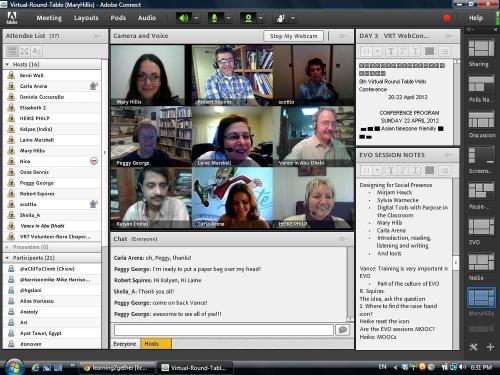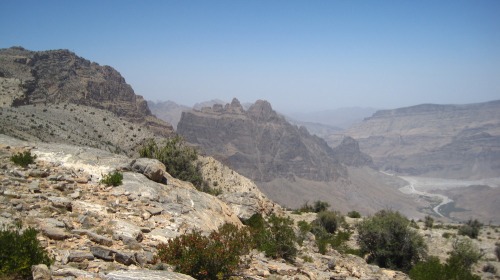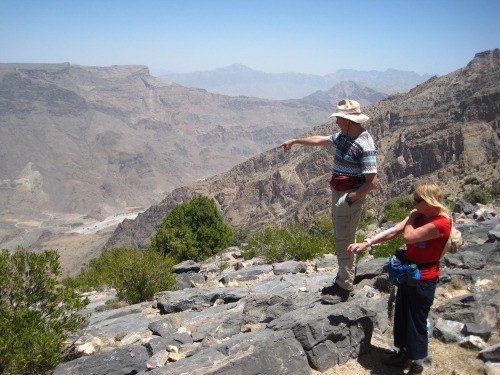The other day I was sitting in a meeting of a research committee at my workplace. The committee has only recently been formed and is at the stage where members are discussing their ideas vis a vis institute requirements, and at the moment one of these is accreditation by http://abet.org. ABET generally emphasizes criteria such as higher order and critical thinking skills, “understanding of the need for and an ability to engage in self-directed continung professional development;” and an understanding of cultural awareness, ethical responsibilities, and respect for diversity.
In this meeting those present were discussing how to break away from largely didactic teaching practices to incorporate those which get students doing things, engaging with visualizatons, and interacting with the teacher and with one another.
Second Life
As I have done before on occasion I wondered aloud why an engineering program such as ours had no presence in Second Life (or a comparable SIM, though SL offers a highly developed range of options). This is an environment where users build their worlds, and there are many instances where students have learned to script and create their own such worlds for a wide variety of projects. For example, there would be opportunities for engineering students to model architecture, refineries, oil platforms, and oil reservoirs themselves. They could create laboratories where they could walk inside of molecules or conduct physics experiments with dramatic results, or play with intriguing mathematical constructs. I mentioned my own interest in virtual simulations, but my purpose here is not to argue the point but to document what I know about Second Life and its use with students in the UAE.
My first published study of educational opportunities in Second life was: Stevens, Vance. (2006). Second
Life in Education and Language Learning. TESL-EJ, Volume 10, Number 3:
http://www.tesl-ej.org/ej39/int.html. There I documented what I had learned about SL and concluded that SL had “caught the imaginations of
many who see in the depths of their computer screens how their work can be made
more enjoyable, productive, and interactive in the course of encountering
others attracted to 3D virtual spaces. One certainty is that Second Life is
having an impact and making a difference now, and that it has already altered
in interesting and positive ways the shape of upcoming developments in
technology used for education.”
A year later at the METSMaC conference in Abu Dhabi, March 18, 2007, I gave a talk on the potential for education of
the MUVE Second Life in an oral
presentation entitled “Second life and online collaboration through peer to
peer distributed learning networks”. The draft of the paper I
submitted for the proceedings can be viewed in browser-friendly HTML here:
http://www.homestead.com/prosites-vstevens/files/efi/papers/metsmac/metsmac_secondlife.htm,
and the published version is here:
http://www.homestead.com/prosites-vstevens/files/efi/papers/metsmac/Stevens-METSMaC-2007.pdf. I had given a similar presentation at the TESOL Arabia Conference in Dubai the day before, and an annotated rendition of the slides presented at this talk appears here:
http://www.homestead.com/prosites-vstevens/files/efi/papers/tesol/arabia2007/00.htm.
The following year I was invited to consolidate what I had by then discovered in my explorations of Second Life in a paper published in The Linguist: Stevens, Vance. (2008). “Class of the future: Language
learners can now meet up with native speakers in their home country, without
leaving their computers. Vance Stevens enters the virtual world of Second Life.”
The Linguist (June/July), pp. 18-20. Available:
http://sl2ndchance.pbwiki.com/f/linguist18-21_2ndLife_lo-res.pdf.
To prepare this paper I took notes at http://sl2ndchance.pbworks.com/. At the time I had attended a conference held in May 2008 in (and about) Second Life at http://www.slanguages.net/ (the link now goes to the 2010 event, but there is an archive). There was a very interesting presentation at this conference by Chris Surridge and Mark Karstad on a project they had been working on with the young ladies at Dubai Women’s College, which had given them the opportunity to create and learn in a virtual mock-up of a Dubai virtual campus, as reported in a Middle East technology newsletter from April 2008: http://www.itp.net/517605-dubai-womens-college-opens-second-life-campus. The slide show of their presentation highlights the cultural but also the learning aspects of the project: http://www.slideshare.net/slanguages/microsoft-power-point-conservative-societies-considerations-from-the-middle-east.
I suggested at the meeting that working with our students in such an environment might engage them spacially and on a critical thinking level, as had been shown at Dubai Women’s College. I think that a project in Second Life would not need to be conducted by a SL expert, but only by someone who was willing to learn alongside the students. The students would learn what was necessary to build the world from available resources (including peers and mentors encountered in SL) and from each other, with the guidance of the faculty member chosen to lead the project.
Meanwhile, just tweeted: http://twitter.com/VanceS/status/38093410275565568
The interview was part of the http://village.grouply.com EVO session and was recorded by Heike Philp February 9, 2011 via an audio / screen-sharing bridge between Second Life and Adobe Connect. The link to the Connect recording is:
http://lancelot.adobeconnect.com/p91933580/
ePorfolios
What I had already proposed prior to this meeting had been meant to address the lifelong learning and communications portions of the ABET criteria, which I have been involved with through my work with communities of practice and personal learning networks throughout the past decade.
My involvement with such communities is a very long story. One of my articles concerning that involvement which has received positive feedback from peers is this one: Stevens, Vance. (2009). Modeling Social Media in
Groups, Communities, and Networks. TESL-EJ, Volume 13, Number 3:
http://www.tesl-ej.org/wordpress/past-issues/volume13/ej51/ej51int/.
This ongoing involvement in communities practicing online professional development has led to my giving an ongoing online course in Multiliteracies, sometimes as part of the TESOL Principals and Practices of Online Teaching program http://www.tesol.org/s_tesol/sec_document.asp?CID=664&DID=2642, and sometimes as a community service component of the EVO, Electronic Village Online, annual professional development sessions based at http://evosessions.pbworks.com. The “Multiliteracies for Social Networking and Collaborative Learning Environments” course has been lately developed through a wiki maintained at http://goodbyegutenberg.pbworks.com. As can be seen from the syllabus at that wiki, the course is run through the MOOC concept, and uses ePortfolios as its only assessment tool.
MOOC means ‘massive open online course’, although I argue that the idea scales down to ‘mini’, or ‘miniscule’. The idea is that the materials in such a course are online and openly accessible, as is famously the case at MIT; the benefits of participating in such a course as opposed to simply consuming its content are interaction with a professor and other students, and the social network of peers and other learners with similar interests that participants derive from such a course. Participants are expected to orient themselves in the open environment, declare their interests to other participants, network with others in the course, cluster into breakout conversations, and then focus on what will be their main ‘takeaway’ from the course.
One means of demonstrating focus is maintenance of an ePortfolio, where participants define their learning goals with respect to the course, document their progress in meeting these goals, and post certain deliverables that indicate achievement of some aspect of these goals.
For my own Multiliteracies course I’ve been using the MOOC model as outlined in this document:
McAuley, Alexander; Stewart, Bonnie; Siemens, George; and Cormier, Dave. (2010.) Massive open online courses: Digital ways of knowing and learning, The MOOC model for digital practice. Created through funding received by the University of Prince Edward Island through the Social Sciences and Humanities Research Council’s
“Knowledge Synthesis Grants on the Digital Economy.” Available from http://davecormier.com/edblog/wp-content/uploads/MOOC_Final.pdf.
The 4 videos mentioned in this document are embedded at various places in the Goodbyegutenberg syllabus.
Hazel Owen worked for a time at HCT DMC and recently gave a plenary on ePortfolios entitled “Web 2.0 ePortfolios that work for both students and educators: Strategies and recommendations.” It’s handout (online in Google Docs) is chock full of resources and includes a diagram showing a mindmap of ePortfolio affordances: https://docs.google.com/View?id=dcqj5jv4_102mgfgjngp. The podcast site for that conference has numerous presentations on ePortfolios well worth listening to: http://talkingvte.blogspot.com/search/label/ves09; for example Allison Miller’s presentation on Current VET initiatives and e-portfolio national directions, http://talkingvte.blogspot.com/2009/11/ves09-setting-scene-current-vet.html. Allison Miller coordinates ePortfolios for the Australian Flexible Learning Framework and helped organize a conference on the topic last year: http://www.flexiblelearning.net.au/content/e-portfolios-australia.
Addition rationale for use of ePortfolios is given toward the bottom of the syllabus here:
http://goodbyegutenberg.pbworks.com/Week2EVO2011
I elaborated on the affordances of ePortfolios for promoting some of the skills mentioned above in a blog post for the course here: http://multiliteracies.ning.com/profiles/blogs/week-3-wrapup-miniscule-open
I point out that ePortfolios are an excellent way for mature 21st century learners to track and reflect on their learning goals and accomplishments. Among the many affordances of eportfolios that make them ideal tools for mature learners to perform self-assessment, and even for institutional assessment for such learners, are:
- They motivate students/participants by providing global audience (Let’s use the term students here to suggest that you might apply these principles and techniques not just to this course but to your own classrooms)
- Hence students spend more time perfecting them for peers than they do for a teacher
- Thus they encourage global perspective
- They are connectivist
- They introduce learners to social networking, concept of networked learning
- They fit well with MOOC philosophy
- They invite dialog, conversation (clustering)
- They are constructivist
- They encourage reflection
- They encourage learners to set their own goals, propose learning strategies, document milestones, and present outcomes
- They are owned by learners, not by institution
- They are sometimes maintained by learners after a course ends
- Thus they carry over into lifelong learning
- They carry over into real life (as cv’s for example)
- They help make learners aware of their personal web presence
- As assessment tools they are formative
I made this list for a presentation I gave on this topic on January 30, 2011, recorded here, in Elluminate:
Although current curricula at the PI lack scope for such models I believe the conversations we have had in the research committee meetings so far have been pointing generally in this direction. I have in my own materials development at the PI been aiming at this target by introducing students to social bookmarking using Delicious and collaborative writing using Etherpad clones and Google Docs.
I’m slated to give workshops on these materials in March this year at the TESOL Arabia conference in Dubai and a week later at the International TESOL Convention in New Orleans. I’ll put links to those presentations and to these materials here when I’ve got them ready.
I had been hoping to experiment more along these lines if given the opportunity, and I hope the direction that the research committee is setting will provide opportunities for materials designers at the PI to venture further toward meeting ABET criteria, which coincide with my own teaching philosophies in creating curricula for students that will challenge them and get them thinking socially and collaboratively in conjunction with networks of other learners.
















